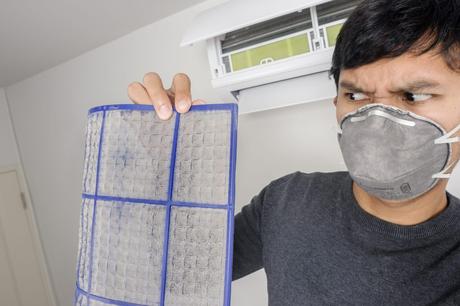Air quality within the home is something to be concerned about, especially in households where some members are sensitive to allergens or have respiratory issues. Even those who don't suffer from allergies or asthma can be negatively affected by interior air contamination, and may experience adverse health symptoms due to poor air quality. This raises the question of how you can tell what the quality of the air in your home is like, and how to pick the most effective and least expensive ways to improve or purify the air you breathe. There are various methods and products to select from, based on scientific studies and experts' opinions. Some of the most common and effective are dehumidifiers, discount air filters, and premium air conditioning systems.

So how exactly does air quality impact you and your family's health, and what are the most common sources of indoor air pollution?
According to research by the Environmental Protection Agency (EPA), there are many common causes of indoor air contamination, including:
- Excessive moisture in bathrooms which causes mold spores, mildew, and dust mites.
- Combustion products and appliances, such as furnaces, gas ranges, dryers, water heaters, that aren't properly vented.
- Volatile organic compounds (VOCs), which are evaporated substances from furniture, rugs and carpeting, indoor plants, body odors and even odors from cooking, such as yeast from baking bread.
- Dust particles.
- Flooring and carpets.
- Pet dander and allergens.
- Radon, a radioactive gas that comes from soil.
- Other external pollutants such as pesticides and smog.
- Tobacco smoke.
- Humidifiers.
- Human respiration.
- Cleaning products and air fresheners.
Not all pollutants and toxins are immediately noticeable. The first indications may be unpleasant, musty odors, but health symptoms caused by air contamination are often delayed until toxicity has really set in. Those with pre-existing health conditions such as asthma are particularly sensitive and prone to the negative effects of interior air pollution. But similar to the Coronavirus, young children and elderly household members, or anyone who has a weaker immune system, are also significantly more susceptible to the negative effects of inhaling and ingesting these household contaminants.
Dehumidifiers To Reduce MoistureReducing interior humidity and excessive moisture is key to preventing mold and mildew, thereby improving air quality in areas of the home where moisture can accumulate, such as in bathrooms with little or no ventilation. There are many products designed for this purpose, but it's wise to invest in a high-quality dehumidifier with positive reviews to effectively lower humidity levels in one's home. A variety of affordable dehumidifiers can be found on the market, available in different sizes and with various features to suit consumers' individual needs and preferences.
Air Filters For Other ContaminantsTo combat contaminants such as tobacco smoke, and dust particles, the EPA recommends sanitizing the air in one's home with a portable air filter, designed for small spaces, or an air-conditioning HVAC filter system with the capacity to purify an entire home. Prices for these filters vary, but those seeking an air-purification solution that's less costly but still effective are advised to browse retailers offering a wide range of sizes and customized options. It's important to conduct research on available products based on specific needs and types of homes, as suitable systems for large houses will differ from those useful in small apartments.
For those who prefer a more nature-based approach to filtration technology, there are alternative methods of removing toxins from the air indoors. NASA conducted a study on how houseplants can effectively improve air quality by diffusing harmful pollutants such as formaldehyde, ammonia, cigarette smoke, radon, and other toxins by absorbing them through their roots. Plants known for their purification abilities include Chinese Evergreen, Boston Fern, Flamingo Lily, Lilyturf, Bamboo Palm, English Ivy, and other species well-suited to being kept indoors.
Exposure To Toxins May Result In Physical SymptomsIn many circumstances, people are unaware of their exposure to toxins until they develop symptoms. Below are some common toxins and the side effects they may cause:
- Trichloroethylene And Benzene: May cause dizziness, headaches, nausea, drowsiness, confusion, irregular or elevated heart rate, and in severe cases, even comas.
- Formaldehyde: Exposure can irritate nose, mouth, and cause swelling in the lungs.
- Xylene: Can irritate the respiratory system, and may also cause severe kidney and liver damage.
- Ammonia: Another irritant that effects eyes, throat, and lungs.
Taking into consideration all the toxins that may be circulating in the home and putting overall health at risk, air purification is essential for the overall quality of life of residents. Since pollutants and their negative effects are, in some cases, not immediately noticeable, it's crucial to protect your family's health by taking preemptive measures to assess the air quality in the home, and counteract potentially hazardous conditions with air filtering solutions. Maintaining a healthy home environment is more important than ever, and having awareness of indoor air contamination and knowledge of how to prevent it is paramount.

